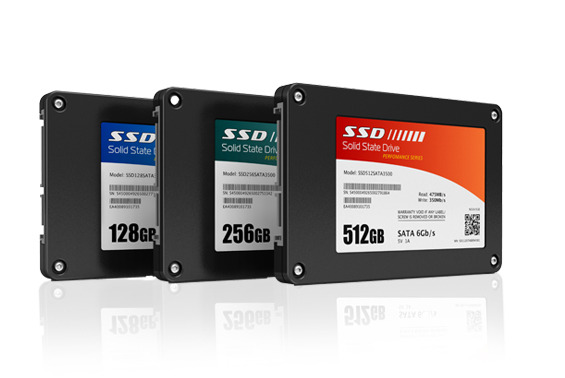What is SSD Technology?
SSD or, Solid State Drives are computer hard drives that make use of non-volatile NAND flash memory. With a smaller, lighter and more compact footprint, no moving parts to wear out and blazing fast response time these drives are slowly but surely relegating the larger and slower Hard Disk Drive to the garbage bin of computer evolution.
SSD vs HDD: The Advantages
SSD’s have a number of advantages that make them technically superior to Hard Disk Drives;
- Computer start-up time: Spin-up time is instantaneous, computers start almost immediately as there are no moving parts to slow down the process.
- Random access times are blazingly fast–again this is due to the lack of moving parts.
- Heat issues are one of the biggest killers of HDD’s. SSD’s generate much less heat.
- SSD’s do not need to be defragmented.
- SSD’s are quieter than HDD’s
- Solid State Drives are more reliable, they can’t breakdown due to having no moving parts, they can operate in environments where Hard Disk Drives cannot
- And best of all SSD’s use less power, which means longer battery life in a tablet or laptop computer.
Will SSD’s Replace the HDD?
Depending on what the user wants to use his or her computer for there are certain advantages to using a Solid State Drive. For the typical user who is looking for a low cost desktop to use for sending emails or browsing the Internet and has no need for high performance software then using current HDD technology will suit their needs.
For people using laptop or tablet computers, having SSD drives will be of great advantage. The lighter weight and smaller size of the drive means that the computer will weigh less, is more portable and more comfortable to use. The faster response time and lower energy requirements will allow longer battery life, reduce the need to plug in or recharge so often, will let the computer run cooler and increase mobility. And most importantly, the more rugged design of your typical SSD drive means there is less possibility of the computer’s drive crashing or breaking if the computer is dropped while being used.
Graphic and video designers, website designers, other IT professionals and online gamers will appreciate the speed and utility of the SSD. The SSD’s fast response time means that they can work on large files and use complex software programs without any lag or delay. The results of inputted commands can be seen much quicker and data can be transferred much more rapidly.
An added bonus, due to the SDD’s low power requirements and small footprint, a number of SSD drives can occupy the same space as one single Hard Disk Drive and by doing so can greatly increase a computer’s computing power and capabilities without increasing its size.
The Answer: SSD’s Rule!
Yes! They are lighter, faster, tougher and smaller than currently marketed Hard Disk Drives. Lower power requirements and giving off less heat than their energy-hogging competitors makes them ideal for laptop and tablet computer users. And the sheer speed and computing power will appeal to power users such as IT professionals, designers and gamers. Bottom line; The HDD may not be extinct but it soon will be.
